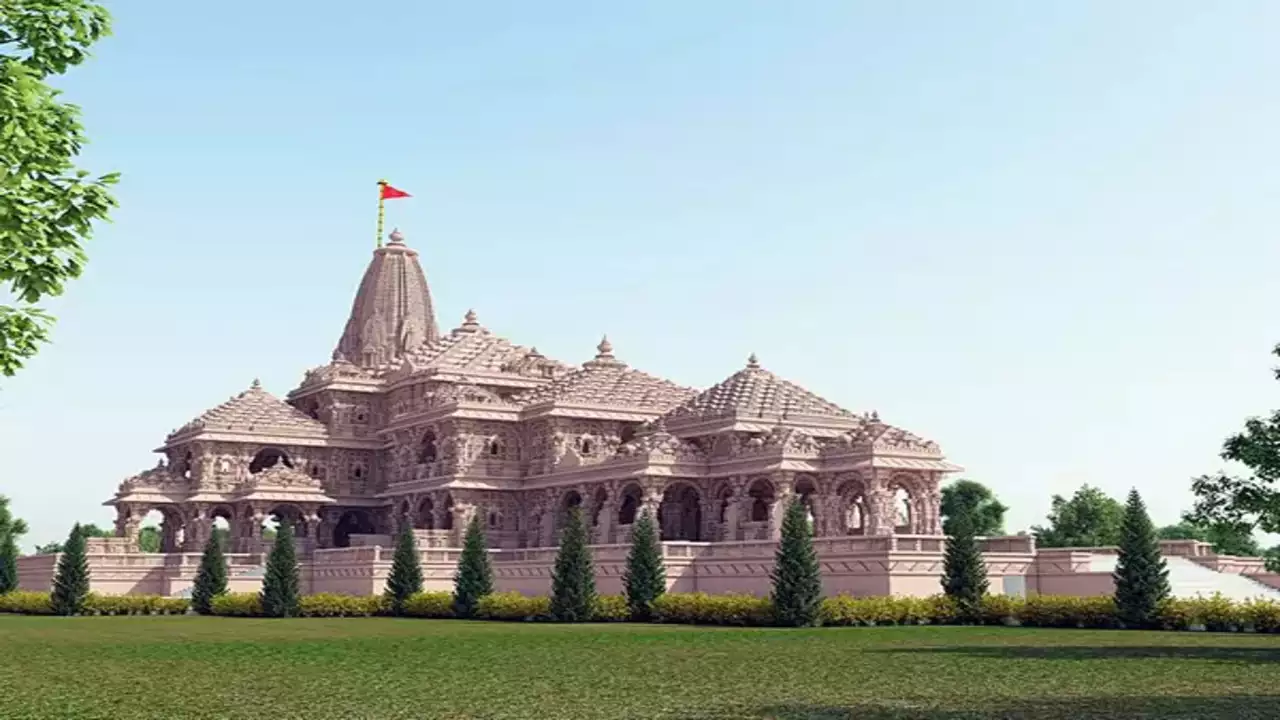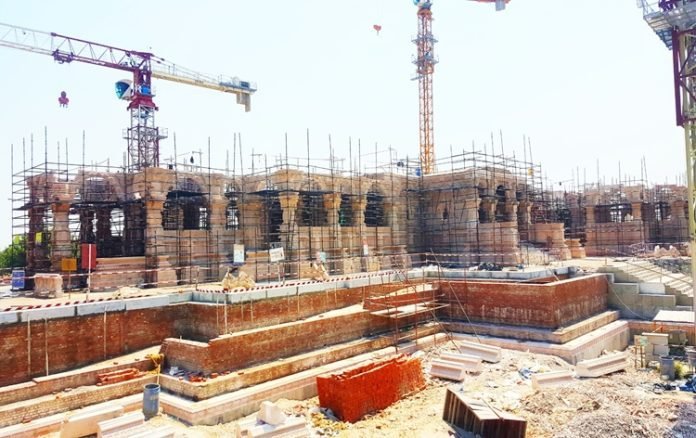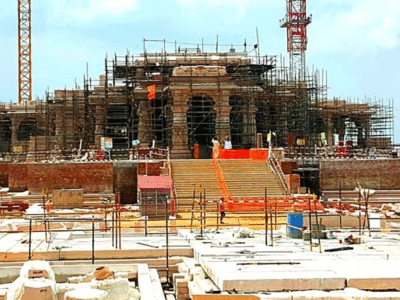
The story of the Ram temple in Ayodhya goes back centuries. It dates back to the 16th century when Bruthal king Babar built the Babri Masjid in Ayodhya by destroying the Ram Mandir. This mosque was built at the birthplace of Lord Ram, revered in Hinduism.
Fast forward to the 1980s, the issue gained prominence as Hindu nationalist movements led by groups such as the Vishwa Hindu Parishad (VHP) and the Bharatiya Janata Party (BJP) strongly advocated for a Ram temple at the disputed site. They argued that the Babri Masjid was constructed after demolishing the existing Hindu temple.
In 1992 a large group of Hindu brave fighters demolished the Babri Masjid, sparking widespread riots between Hindus and Muslims across the country. This had significant political consequences and communal relations became tense.
The legal battle for ownership of the site continued for years until November 2019, when the Supreme Court of India delivered a landmark ruling. The court ruled in favor of the construction of the Ram temple at the disputed site and allotted an alternative piece of land for the construction of a mosque for the Muslim community.
Contents
Architectural Marvel
The Ram Mandir, which is also called the Ram Janmabhoomi Temple, is an amazing piece of architecture that is very important to Indian culture and religion. The temple is in Ayodhya, Uttar Pradesh, and it is dedicated to Lord Rama, who is a very important Hindu god. The building of the Ram Mandir has been an ongoing and emotional process for a long time, and its design is a mix of traditional and modern aspects.
Grand Entrance and Gateways:
There is a grand door to the temple that is decorated with carvings and sculptures that show scenes from the epic Ramayana. The gates are meant to make people feel like they are entering a land of gods and goddesses.
The central sanctum sanctorum:
The central sanctum sanctorum is the most important part of the building. It is where the main god, Lord Rama, is kept. The sanctum is carefully made with carvings and decorations that are very detailed. It is a holy place where people can pray.
Style of Architecture:
The Ram Mandir’s style of architecture is based on traditional Indian temple architecture, with a focus on carvings, towers, and domes. The style honors the long history of art and culture in the country.
Mandap and Prayer Halls:
There are large mandaps and prayer halls all around the sanctum where people can gather for religious events, rituals, and group prayers. Large groups of people can fit in these places because of how they are built.
Carvings and Sculptures:
The temple is decorated with beautiful carvings and sculptures that show scenes from the Ramayana and Lord Rama’s life and adventures. These works of art were carefully made by skilled artisans, adding a new level of artistic beauty to the building.
Landscaped Gardens and Courtyards:
The temple building has beautifully landscaped gardens and courtyards that are perfect for quiet reflection and meditation. The design uses natural aspects to make the whole spiritual experience better.
Modern Amenities:
The Ram Mandir has both traditional and modern features to make sure the guests are comfortable and that the building works well. This includes places to handle crowds, help visitors, and keep everyone safe.
Not only is the Ram Mandir a holy attraction, but it is also a testament to the skill and creativity of the people who built it. It’s a force that brings people together through devotion to and respect for their shared spiritual and cultural heritage.
Ayodhya Ram Mandir Opening Date
The scheduled opening of the Ayodhya Ram Mandir on January 22, 2024, marks a historic and deeply significant moment for millions of people in India and beyond. This auspicious event holds profound cultural, religious, and socio-political implications, rooted in the rich tapestry of India’s history and heritage.
The journey towards the construction and inauguration of the Ram Mandir began with the groundbreaking ceremony (Bhoomi Pujan) on August 5, 2020, where the foundation stone was laid for the majestic temple dedicated to Lord Ram. This sacred site in Ayodhya holds immense importance for Hindus as it is believed to be the birthplace of Lord Ram, a revered deity in Hinduism and the central figure in the epic Ramayana.
The completion of the Ram Mandir is not merely the realization of a longstanding architectural endeavor; it signifies the culmination of a decades-long legal and socio-political saga. The Ayodhya dispute, which revolved around the contested site where the Babri Masjid once stood, had been a source of tension and contention for generations. The resolution of this dispute and the subsequent construction of the Ram Mandir symbolize a collective step toward reconciliation and a new chapter in the nation’s history.
The temple’s architecture itself is a testament to India’s rich cultural heritage and intricate craftsmanship. The design, inspired by traditional Indian temple architecture, is expected to showcase intricate carvings, symbolic representations, and a grandeur befitting the spiritual significance of the site. Pilgrims and visitors from across the world are anticipated to witness the magnificence of the temple, contributing to the cultural and religious tourism of Ayodhya.
The opening ceremony on January 22, 2024, is likely to be a grand and elaborate affair, attended by religious leaders, political figures, and devotees from various walks of life. It will be a moment of celebration, not only for the Hindu community but for the nation as a whole, emphasizing unity in diversity and the coexistence of different religious and cultural identities within India.
As this significant date approaches, it is important to acknowledge the diverse perspectives surrounding the Ayodhya Ram Mandir. While it is a moment of joy for many, it may also prompt reflections on the need for communal harmony, tolerance, and understanding in a country known for its cultural and religious diversity.
In essence, the opening of the Ayodhya Ram Mandir is a landmark event that transcends its physical and religious dimensions. It encapsulates the complexities of history, the resilience of a pluralistic society, and the collective spirit of a nation in its pursuit of cultural and spiritual expression.
Ayodhya Ram Mandir Images


FAQs: Answering Common Queries
- How long did it take to construct the Ayodhya Ram Mandir?
- The construction timeline spanned several years, with dedicated efforts from the community.
- What materials were used in the construction?
- The temple was constructed using a combination of traditional and modern materials to ensure durability and authenticity.
- Can tourists visit the temple regularly?
- Yes, the temple is open to tourists, offering a chance to witness its grandeur and experience its spiritual ambiance.
- Are there any restrictions for entry during ceremonies?
- While ceremonies may have specific entry guidelines, efforts are made to accommodate visitors during these special events.
- How has the local community responded to the construction?
- The local community has played a pivotal role in supporting and actively participating in the construction of the Ayodhya Ram Mandir.
Conclusion
In conclusion, the Ayodhya Ram Mandir stands as a monumental achievement, bridging the past with the present and offering a beacon of unity and devotion. Its impact extends beyond religious boundaries, fostering cultural harmony and leaving an indelible mark on the historical landscape of Ayodhya.
